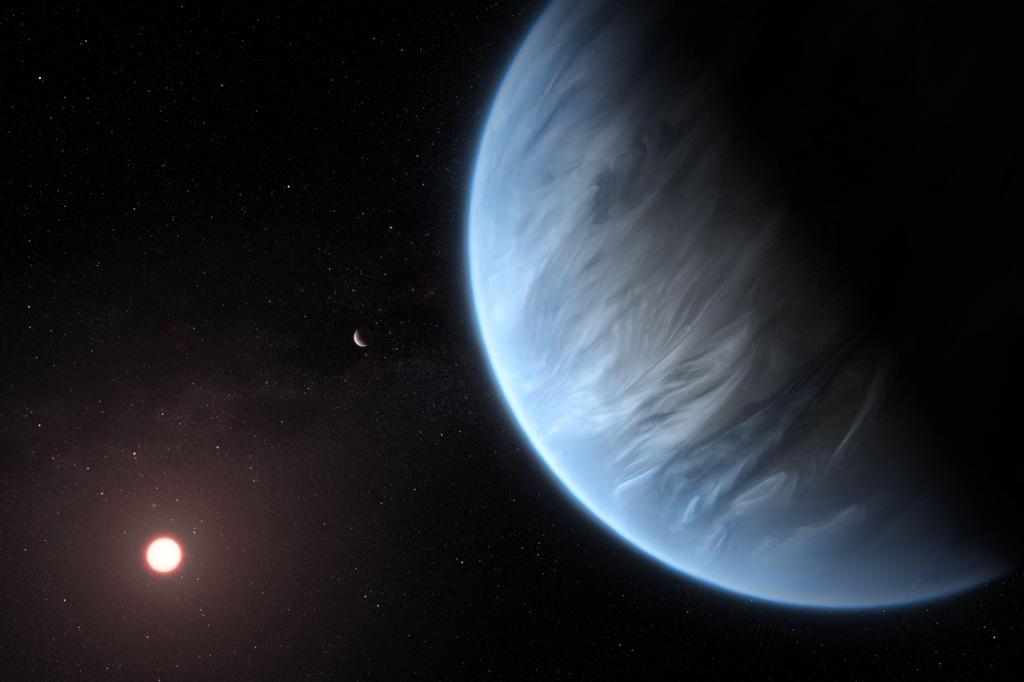Life on K2-18b? Webb Telescope Data Fuels Excitement and Debate
The James Webb Space Telescope (JWST) has once again captured the world's attention, this time focusing its powerful gaze on K2-18b, an exoplanet orbiting a red dwarf star 120 light-years away. While definitive proof of life remains elusive, new data gleaned from the JWST is sparking intense debate and fueling speculation about the possibility of life beyond Earth. Could K2-18b harbor life? Let's delve into the latest findings.
K2-18b: A Potentially Habitable Exoplanet?
K2-18b is a super-Earth, meaning it's larger than Earth but smaller than Neptune. Crucially, it resides within the habitable zone of its star, K2-18, a region where liquid water – a key ingredient for life as we know it – could potentially exist on the planet's surface. Previous observations suggested the presence of water vapor in K2-18b's atmosphere, but the JWST's unparalleled sensitivity offers a far more detailed picture.
What the JWST Data Reveals
The JWST's data hasn't definitively confirmed the presence of life, but it has significantly advanced our understanding of K2-18b's atmosphere. Early analysis suggests:
- Presence of various molecules: While the exact composition remains under scrutiny, the JWST has detected a range of molecules, some of which are associated with biological processes. However, it's important to note that these molecules can also have non-biological origins.
- Atmospheric complexity: The diversity of detected molecules hints at a more complex atmosphere than previously anticipated, further intensifying the scientific interest in this exoplanet.
- Need for further analysis: The data is still being processed and analyzed, with researchers working to eliminate any potential interference from other sources and refine their models.
The Challenges and Limitations
While the JWST data is exciting, it's crucial to acknowledge the limitations:
- Distance and observation difficulties: Observing exoplanets from such a vast distance is inherently challenging, and data interpretation can be complex.
- Absence of biosignatures: While some molecules detected might be associated with life, the absence of definitive biosignatures (clear indicators of biological activity) prevents any definitive conclusions.
- The nature of red dwarf stars: K2-18 is a red dwarf star, which emits less energy than our Sun. This presents both opportunities and challenges regarding habitability. Red dwarf stars are known for powerful stellar flares, which could potentially sterilize any life on nearby planets.
The Future of K2-18b Research
The JWST's observations represent a significant leap forward in our understanding of K2-18b. However, much remains to be discovered. Future research will focus on:
- More detailed atmospheric analysis: Researchers will continue to analyze the existing data and conduct further observations to refine our understanding of K2-18b's atmospheric composition.
- Search for biosignatures: The hunt for definitive biosignatures will remain a top priority. New techniques and observational strategies are constantly being developed.
- Comparative exoplanet studies: By studying K2-18b in conjunction with other exoplanets, scientists can develop more comprehensive models of planetary habitability.
Conclusion: Hope, Speculation, and the Search for Life
The JWST's data regarding K2-18b has ignited the scientific community and public imagination alike. While we are far from confirming the existence of life on this distant world, the possibilities remain tantalizing. The journey to unraveling the secrets of K2-18b is far from over, and the ongoing research holds immense promise for our understanding of the universe and the potential for life beyond Earth. Stay tuned for further updates as this exciting story unfolds!
Keywords: K2-18b, James Webb Space Telescope, JWST, exoplanet, habitable zone, super-Earth, red dwarf star, life beyond Earth, biosignatures, atmospheric analysis, space exploration, astrobiology
Related Articles: (Link to other relevant articles on your site – e.g., articles about the JWST, other exoplanet discoveries, etc.)
